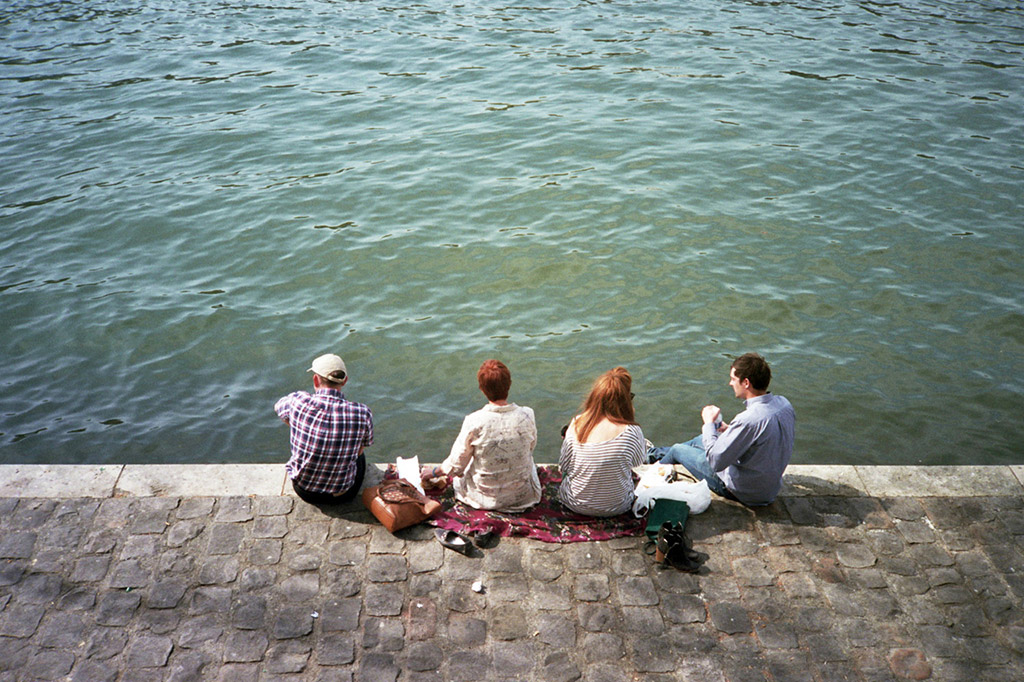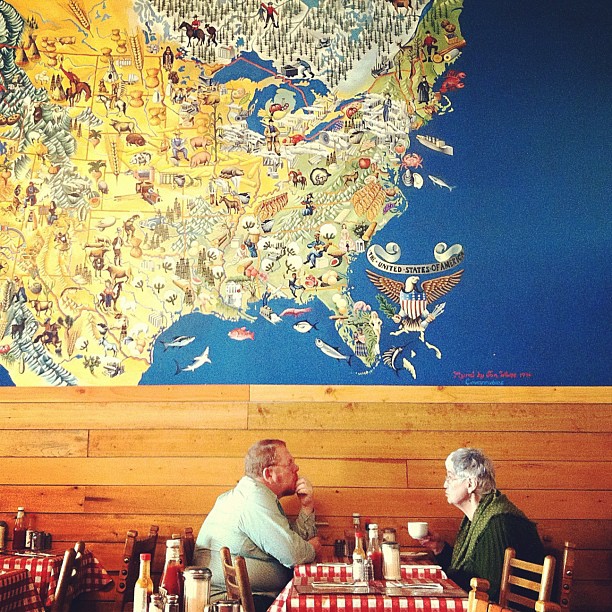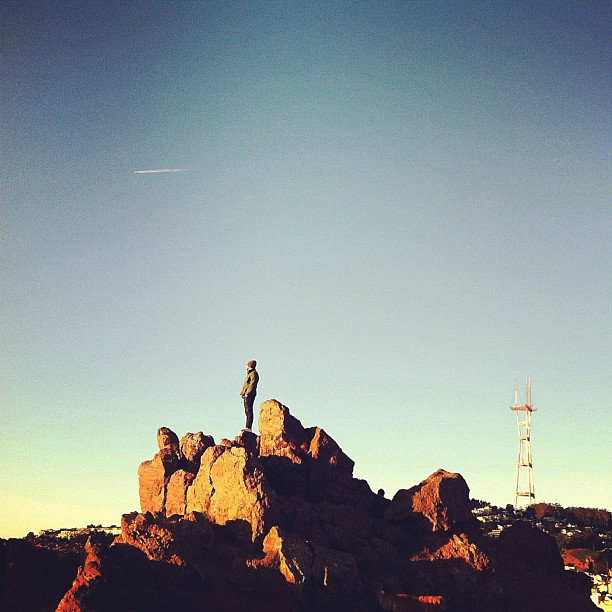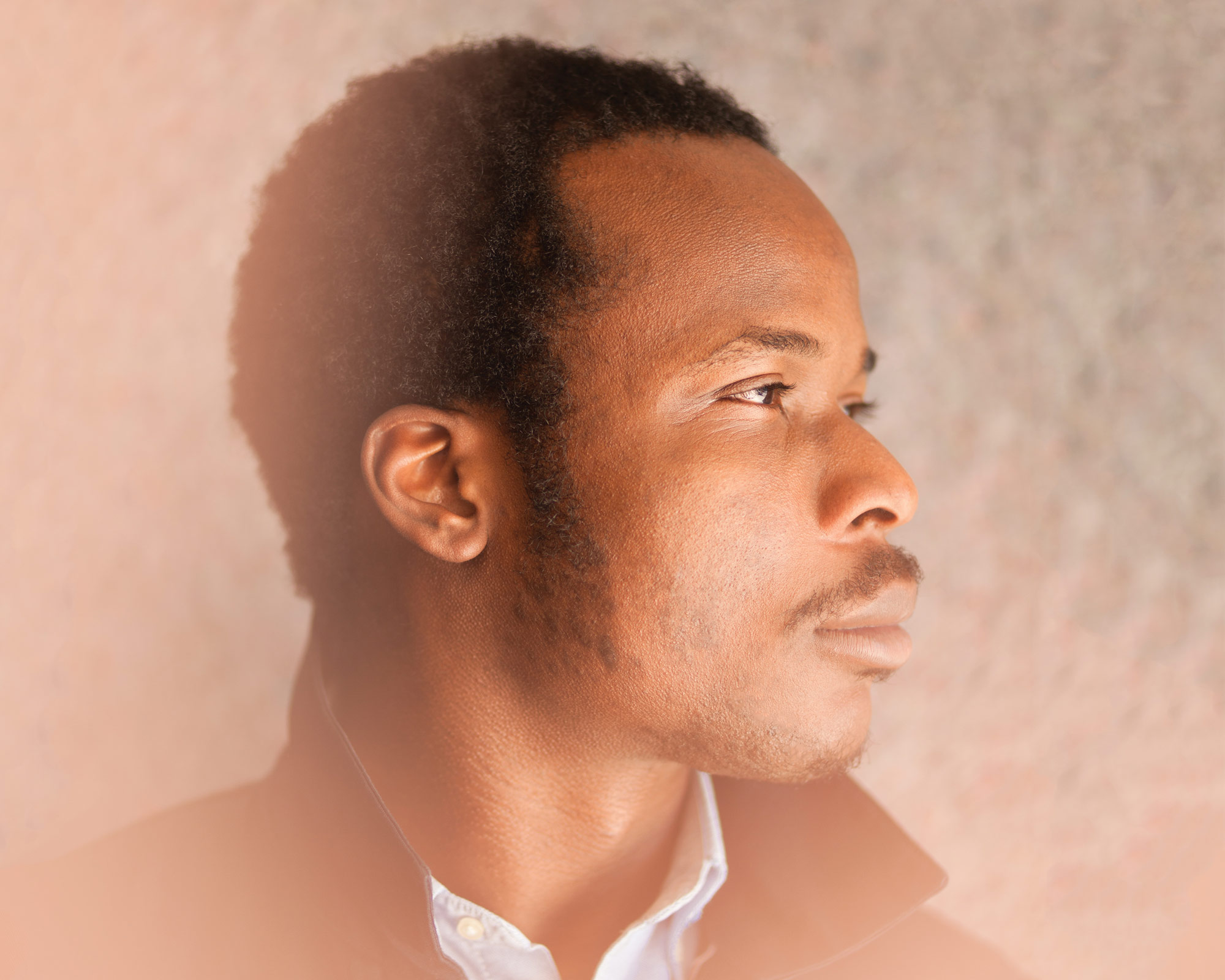
- Interview by Tina Essmaker October 30, 2012
- Photo by Damien Maloney
Ike Edeani
- photographer
Ike Edeani (pronounced I.K.) is a photographer and an art director currently based in San Francisco. Born and raised in Enugu, Nigeria, Ike moved to the States in the Fall of 1999. He used to be an architect.
Interview
 Editor’s note: An updated version of this interview, including new images and work, is featured in print in The Great Discontent, Issue One, available in our online shop.
Editor’s note: An updated version of this interview, including new images and work, is featured in print in The Great Discontent, Issue One, available in our online shop.
Describe your path to becoming a photographer.
When I was 11 or 12 years old, my sister had just started college—she’s a doctor now—and my other sister and I went to visit her. She took us out to lunch and on the way, we stopped by her friend’s room; he was studying to be an architect. At that point, I felt pretty confused about what I wanted to do. I’m from Nigeria where, as a kid, there are very few perceived career options—you’re either going to be a doctor or lawyer or engineer. Those are the three main occupations and it hadn’t yet occurred to me that architecture was an option. I knew I hated science and had decided early on that I wanted to be an artist because I loved to draw and paint. I was heading toward that, but my parents always told me I wasn’t going to make any money being an artist. Because of that, I was trying to figure out something else that made sense.
Anyway, back to the story. We stopped by this guy’s dorm room, I saw the drawings and models he was working on for a project, and it clicked. I thought, “Architecture—that’s a respectable job and I can make money doing it.” That day, I decided to be an architect and I never looked back. I set my sights on it and went out and did it. Along the way, I heard from countless people that it was a horrible idea, but I did it anyway because it was the only thing I wanted to do.
I was a teenager when I moved from Nigeria to the US in 1999. I went to high school for a year and then enrolled in college. I got into the architecture program and the next thing I knew, I was done. I went through the graduate program at the same school because I was eager to get it finished and see what the profession was all about, but I had a sense that it wasn’t going to be everything I’d hoped it would. There’s often a disconnect between being an artist and actually working as an artist. It’s one thing to be creative and not get paid for it—you can create until your heart’s content—but when money gets involved, it’s a whole different animal.
I moved to San Diego and worked as an architect for three years after school. In college, I’d been introduced to graphic design and spent my free time making awful websites for a handful of clients. I taught myself Illustrator, Flash, ActionScript, HTML, and all of that. There was definitely a point in school when I was spending more time on my presentations than I was on my projects. At the time, I didn’t know why I was doing it other than I was curious and had no real reason to stop. When I moved to San Diego and took my first architecture job, I felt bored right away. When you’re starting out in architecture, you work in the same place and do the same thing over and over, which is the exact opposite of how my brain works—I couldn’t stand it. I was working as a freelance graphic designer on the side and, at the time, that was way more creatively fulfilling to me.
I kept trying to figure out why I wasn’t happy. I thought I needed to pay my dues and stick with architecture because I had spent six years of my life going to school for it, but I had a great job I didn’t enjoy. In late 2007, the recession hit Southern California and I got laid off in early 2008. That summer I worked as a consultant for another architect, but I also worked on a short film with a good friend, kept freelancing, and started taking photos for fun. In July 2008, I packed up and moved to the Bay Area where my brother lived and got another job as an architect that only lasted three or four months before I was laid off again. Honestly, I think 2008 was one of the best years of my life, even though I was miserable at the time. I don’t think I would have ever made the leap on my own because I didn’t consider myself to be good at anything else. I was taking photos all along, but never imagined it could actually go anywhere.
When I got laid off the second time, I took it as a sign. I got together with my buddy Abel Morales, who had been laid off the same day as me, and I told him, “Let’s join forces and see what happens.” I was a freelance graphic designer and he was a freelance architect. We came up with a name, printed business cards, built a website, and started a studio. It’s funny what happens when you decide to become an entity and put something behind it—people start to believe in it. Work came in and before we knew it, we had been working for ourselves for two and a half years.
That was me as a graphic designer—but it still didn’t feel quite right. The quality of work that I respond to and the quality of work that I was putting out didn’t match up. Also, Abel and I were both working full-time and barely making enough to pay ourselves and cover overhead expenses. Dealing with all of that was incredibly exhausting. I didn’t know what to do, but I did know that I now had a graphic design portfolio. I decided to see how far that would get me, mostly because I wanted to test the validity of this new path I’d carved out for myself.
I put my work out there and got a job as an art director at a clothing company in San Francisco. Meanwhile, I had been taking photos, but had never shared or put them online. When I started working at this clothing company, I was the only art director there and in addition to overseeing all the visual communication, I was also doing all the product photography. That was the first time I’d ever shot in a studio. At the interview, they told me I was going to be doing product photography and asked if I could handle it. I said, “Sure. Why not?”
During that time, I also began shooting more for myself. I bought an iPhone and started using Instagram. I also set up a Tumblr and started posting photos from my other cameras. By the time I left the clothing company in February, my presence on Instagram had grown substantially. It’s funny to say this, but I can relate my being on Instagram to my switch in focus from design to photography. At first, I was applying the way I shot to my design work, but then I just wanted to shoot more and more and more. The responses I was getting from the photos I posted got me thinking I should just keep shooting and see what happens.
When I left my job in February, the plan was to jump back into freelance design and photography, but instead, I took two months off and travelled. I went to Paris, New York, Austin, and home to Nigeria all while taking photos nonstop. Right before I left, I saw that Phoot Camp was taking applications. I submitted a self portrait, and when I got back in town, I had an email from Laura Miner saying, “Congrats! You’re in.” I couldn’t believe it. Phoot Camp was an incredible experience and really encouraged me to keep focusing on photography. Individually and collectively, I’d been a fan of the work produced at past camps, so it was amazing to be a part of that.
That’s a great story. You talked about seeing people’s responses to your images. Was that an “aha” moment for you?
Yeah, I think it happened simultaneously. I’m a designer so I have a certain aesthetic and an eye for composition. I thought it was cool that I could make visually compelling images. Initially, I didn’t think that meant anything beyond posting photos on Instagram. The more I shot with other cameras though, the more those two worlds started to come together and I realized there’s so much more to it than framing and proportion—I could actually say something with the content as well.
You lived in Nigeria until you were in your teens. Was creativity a part of your childhood there?
I would say yes. My parents were both scholars and my dad was actually a photojournalist for some time—I didn’t make the connection to my life until recently. He took photos in the 1960s during the civil war in Nigeria. Then he moved to the US and went to school; he’s spent most of his life teaching journalism and mass communication.
Growing up in Nigeria, creativity was part of my life in a different way. There were frequent power outages and we’d find ourselves without any light; no light meant no TV or video games. My cousin and I drew a lot and had books full of doodles and paintings. I even had paintings in the school art gallery—I think my mom actually framed one of them.
My cousin, my sister, and I used to read a lot as well, which does wonders for your imagination. It makes you think about what’s possible and outside of your condition. We read everything we could get our hands on—fiction, nonfiction. It got to the point where we literally ran out of stuff to read, so we’d sneak into my older sister’s room and borrow her romance novels and read those. (laughing)
We had pretty wild imaginations, which was partly due to being encouraged to be creative, but also because of what it’s like growing up in Nigeria. There’s not a lot to do. When you get home from school, it’s hard to get out and your friends can’t come over as easily, plus the power might be out. Also, I didn’t have toys growing up; we had to make our own out of random stuff.

“Fundamentally, I get the same feeling from taking pictures as I got from designing buildings—I’m just finding a different way to feed that beast.”
Did you have any mentors along the way?
Professionally, there hasn’t been someone who has been a sounding board. The person who I would say has been the most instrumental in my success is my mom. She was there and encouraged me all along the way. It was tough to have her be that person because she always thought everything I did was awesome. I didn’t take that very well—I’m notoriously bad at taking compliments.
Your mom sounds like an amazing person.
She was. She actually passed away last year. That was tough. In the past year, I’ve dealt with it in a way that has been surprising to me. I’ve really focused on my work. At this time last year, I never would have thought I’d be where I am now. Again, I credit my mom for that—that I’ve been able to really focus on the things I want to do and go after them.
My siblings are always giving me a hard time about work. My sister says I shouldn’t send her any more business cards; she already has a stack of them. I’ve had about five different jobs and three different careers since college. I don’t view it as reinventing myself, but in a way, I guess that’s what it is. The other part of it is that it all comes from the same place. Fundamentally, I get the same feeling from taking pictures as I got from designing buildings—I’m just finding a different way to feed that beast.
Are you creatively satisfied?
At the moment, no. I’m just starting out in photography and have so much to learn and so far to go. I don’t feel like I’ve found my voice yet. I need to spend a lot more time shooting to figure out what I have to say and how I want to say it. I would say I’m not creatively satisfied right now, but as far as what I’m doing, I am satisfied. I’m not sitting behind a desk in an office; I’m lucky enough to be shooting every day. I’m growing and actively pursuing something—I guess the answer is yes. (laughing) I guess I am creatively satisfied. I imagine there are so many people who aren’t in my position. I’m working on nothing but the things I want to right now and that’s pretty incredible.
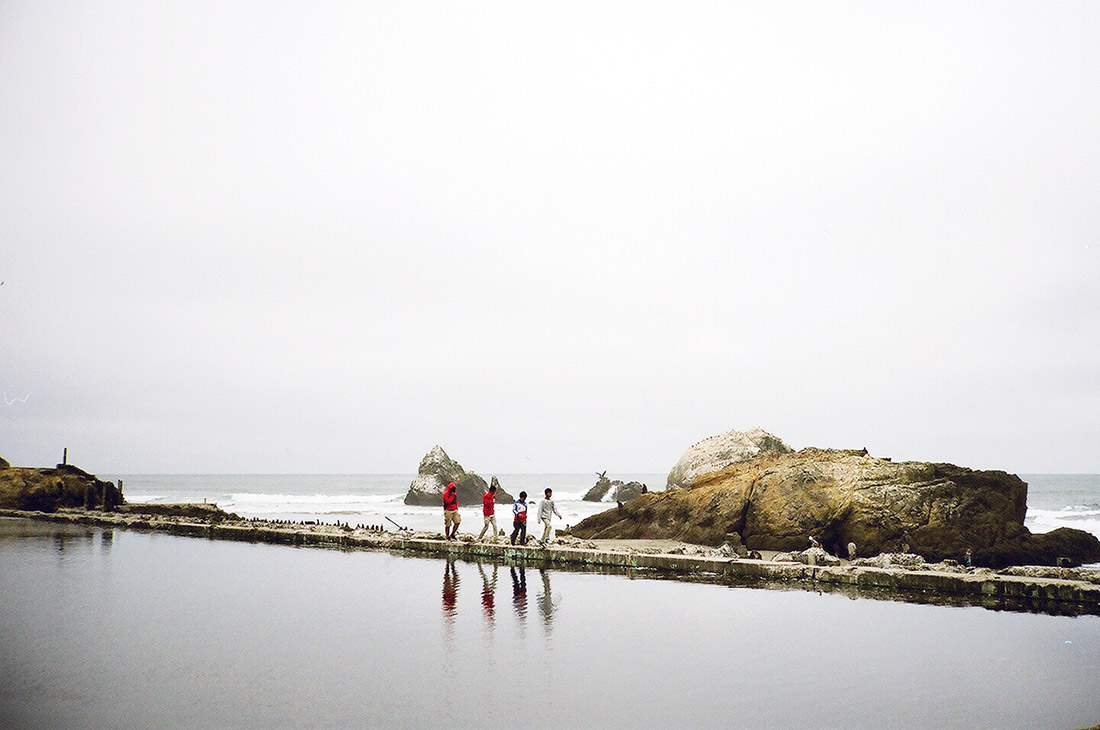
“I would love it if my story—the way I got to where I am—was seen as inspiring to somebody else and they were able to break out of their situation to go after what they want.”
It sounds like there have been several times in your life when you decided to take a big risk to move forward.
Over and over again. After the first one, it became a lot less scary. The first big risk was leaving architecture and going into design. On one hand, it was an easy decision because it didn’t feel like a big risk. Because I have a Master’s degree in architecture, I told myself that if things didn’t work out, I could go get another job as an architect. That would never happen, mind you. I have this nostalgic feeling about architecture because I’d wanted to do it since I was 12 and for a long time, I kept it in my back pocket thinking I might go back. Last year I realized I really have no desire to do it anymore.
You talked about your mom and how supportive she was. Are your other family and friends supportive of what you do?
Absolutely. My one sister is a doctor and my other sister and brother are both software engineers. There are four of us and I think all of my siblings have known what they wanted to do, gone to school for it, done it, and are happy doing it. I think maybe it’s hard for them to understand why I keep changing jobs. At the same time, I know they’re proud of me and they’re supportive no matter what I do. It’s that thing again where they think anything I do is great. I couldn’t ask for more, especially in those moments when I’m feeling really down and don’t know if I’m making the right call. They trust that I go after my heart; they’ve seen that happen many times.
Do you feel a responsibility to contribute to something bigger than yourself?
That is a tough question.
As an aside, a lot of my friends are in startups and non-profits where they’re doing incredible things. When I hang out with them, I honestly feel like a fraud because I’m the artist who is spending all of his energy on “me”. My work is very personal and it probably always will be. That said, I would love it if my story—the way I got to where I am—was seen as inspiring to somebody else and they were able to break out of their situation to go after what they want.
It’s funny whenever I get asked about how I got from point A to point C because, in my head, it doesn’t seem that crazy. All the decisions I’ve made have been based on whether I’m happy where I’m at. If I’m not, I just make a change. There’s something to be said about being financially stable, which I wasn’t for a long time, but I’m doing better now and I feel like I learned so much from that experience. Not everyone can do that because we all have different responsibilities, but we can all at least work toward what we want to do in some capacity. If you are truly passionate about something, it has to happen.
The most seemingly obvious things are the ones that are so hard to do for a lot of people. There’s a perception that people who are successful at something are just good and didn’t work at it. I want to show people that everyone creative is the same; everyone goes through the same struggles. When you feel like your work is not that good, you’re right there—you have to keep pushing. The moment you stop pushing is when you give up and then you’ll never know what could have been.
I was very insecure when I started doing anything other than architecture. I didn’t think I was good enough and I felt like an impostor because I didn’t go to school for it. I didn’t think anyone would hire me to do graphic design or photography because it wasn’t on my resume. Ultimately, I had to do it because I needed to, but my biggest obstacle was myself. Thankfully, I kept pushing. It’s still hard for me to accept being recognized as a photographer because creatively, photography has been the easiest thing I’ve done in my career. I just do what comes naturally and express myself, but I guess that’s what it’s about.
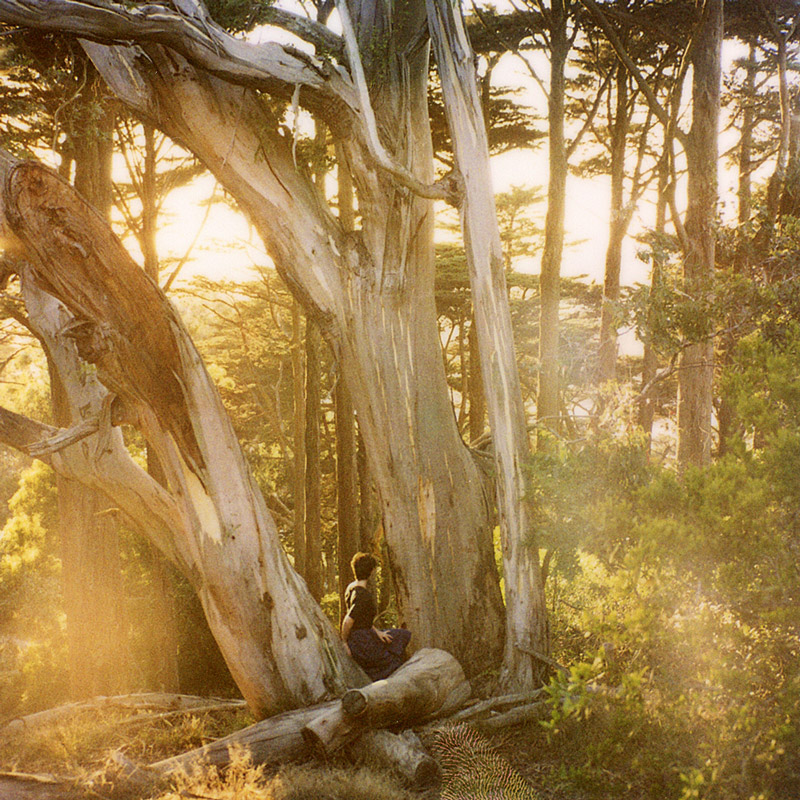
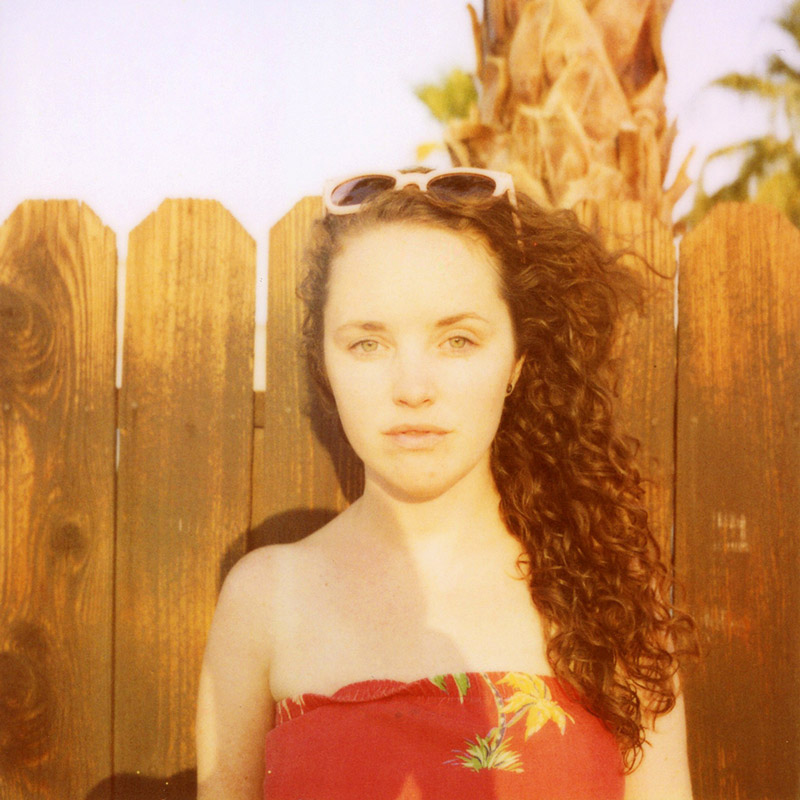
“…everyone goes through the same struggles. When you feel like your work is not that good, you’re right there—you have to keep pushing. The moment you stop pushing is when you give up and then you’ll never know what could have been.”
This is an interesting one because you still consider yourself new to photography. What would you say to a young photographer, or even a young creative person, who is just starting out?
Well, for any photographer starting out, I would say shoot film—you have to shoot film. I don’t care if it’s 2040 or something. Film really connects you with what you’re doing; you’re more in tune with what you’re creating. Shooting that way gives you the very basics you need to make a photo. That way you’re left with your subject and your surroundings instead of staring at the back of a camera and fiddling with a million screens and buttons.
When I started taking photos in 2007, I bought a digital SLR. I didn’t know what I wanted to take pictures of. I’d get these files and wouldn’t like the way they looked so I’d spend hours messing with them in Photoshop. It didn’t feel creative to me—I felt like I was producing these images and there wasn’t much feeling behind it.
When I moved to the Bay Area, I was working on a project with a colleague and my camera got stolen. I couldn’t afford to get a new one right away, so I bought a film camera. When I got the first two rolls of film back, I couldn’t believe it. I thought, “This is what it’s about.” Everything I love about photography happens right up until I click the shutter—to me, everything beyond that is just busywork.
You’re currently in San Francisco, right?
I’ve been in the Bay Area for five years, but have only officially lived in San Francisco since 2010. Before that, I was in Fremont, but commuting to the city every day for work.
How does living there impact your creativity?
It’s the most incredible city I’ve ever been in. I love New York, but there’s just something about San Francisco. Depending on where you are, the light and weather change frequently and the topography is unreal. My neighborhood is called the Lower Haight and five minutes from my house is a forest—Buena Vista Park. You hike to the top and you might as well be out in the middle of the woods somewhere. You can see the entire city from up there—all the way north to the Golden Gate Bridge. And don’t even get me started on the sunsets. Location-wise there’s no shortage of options. I rarely go back to the same spot to shoot and I’m always discovering new places that I didn’t know existed.
Is it important to you to be part of a creative community of people?
I didn’t always believe it was important. I used to be more of a loner, but I’ve opened up a lot and made some lasting friendships since I moved to the Bay Area. Now, being part of a community is incredibly important to me. It helps me understand that I’m not crazy and everything is okay. We all go through times where we question ourselves and our work, and having people around me who I can bounce ideas off of and who can give me feedback has helped me immensely. It helps me push forward and not get bogged down by uncertainty. I have an amazing network here and in New York and it’s been great for me.
What does a typical day look like for you?
I wake up and the next thing I know, I’m exhausted and I go to bed. (laughing)
That sounds about right.
Now I have more of a regular schedule. I’m in-house a few days a week at Wantful to shoot products in the studio. The days I work on my own stuff, it could be anything. I might go to a cafe and edit or I might be out shooting all day.
On the days I work for Wantful, I come in and look over the shot list, figure out what the products are, and shoot from 9am until 6pm or whenever I leave. Today we did a food shoot, which was tricky because we had to style it all ourselves. I just shot 12 cuts of meat; that was tough. I never know what I’m going to encounter at work and that’s a dream to me. I am always off balance and I need that. When I was working as an architect, I almost always knew what I was doing, what the day held for me, and how I was going to solve a problem. It was rare to get stumped, but here, it happens several times a day. I wouldn’t have it any other way, though, because I’m growing and getting better every time I get through a challenge.
Any current album on repeat?
Today I listened to old school hip-hop because I needed some comforting music to get me through that food shoot. Otherwise, I’ve been listening to The Lumineers’ new album, which I love. I just went to the Treasure Island Music Festival last weekend. One of my favorite DJs who I finally got to see perform is Tycho. His album, Dive, is one of my favorites of recent memory. I’ve been listening to Grimes, Purity Ring, Frank Ocean, Poliça, Beach House, and Gold Panda, who is one of my all-time favorite DJs from the UK. I love electronic music, especially when it comes to work because it helps me process things better.
Do you have any favorite TV shows or movies?
Breaking Bad and the British show, Luther. One of the things I love about British TV shows is that their seasons are usually around six episodes so they pack so much into each one. There’s another British show called Top Boy that’s fantastic. I also love The Wire.
I love movies, so it’s almost impossible to choose. I tend to pick favorite directors rather than particular films, in which case I would go with Wong Kar-wai, Danny Boyle, Wes Anderson, The Coen Brothers, and Alejandro González Iñárritu.
I made and shot a short film with a friend of mine when I lived in San Diego. For a very short minute, I considered making films. Then I decided I couldn’t do it because in order to make films, I think you really have to focus on only that. I want to be able to try a lot of different things.
What’s your favorite book?
I’m currently reading the fourth book in the A Song of Ice and Fire series, which the TV series Game of Thrones is based on. I’ve read so many books in my time and growing up, it wasn’t just about one book—it was more about the authors. We had phases where we’d read everything by one author. My sister had the Dean Koontz phase and we all had the John Grisham, Michael Crichton, and Jeff Patterson phases. Back in the day, we also read the Bourne Trilogy by Robert Ludlum.
Do you have a favorite author?
John Grisham was my favorite when I was a kid. Now, I would say my favorite author is George R. R. Martin because he is just brilliant. The amount of detail he puts into everything in that series, from the characters to the story-lines to the descriptions of seemingly mundane things, is astounding. I also like the work of Daniel Silva.
Your favorite food?
Right now I’m on a paleo diet where I don’t eat white carbs. My favorite food used to be rice and technically, it still is, but I just don’t eat it anymore. I mostly eat protein, vegetables, and beans. I love steak and fish. A couple years ago, I might have said a burger for my favorite food. (laughing) The thing about living in California is that the produce is so good that the most basic thing can be the best you’ve ever tasted, so it’s hard to have a favorite food here. More recently I’ve been enjoying the Brussels sprouts/pancetta combination.
What kind of legacy do you hope to leave?
I want to be remembered as someone who relentlessly went after what he wanted and created what—and how—he wanted. Whether or not I’m successful is beside the point. I don’t know what my contribution will be beyond that. I try to give back as much as I can, but ultimately, I want to inspire others to go after their passions.
